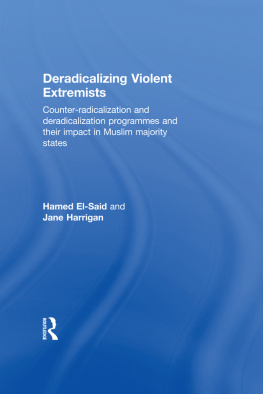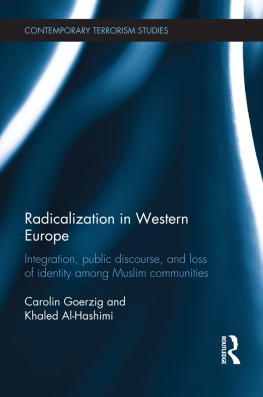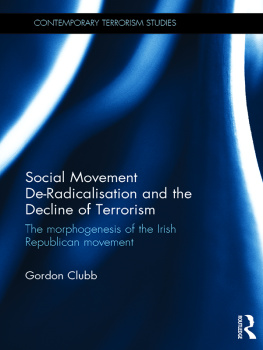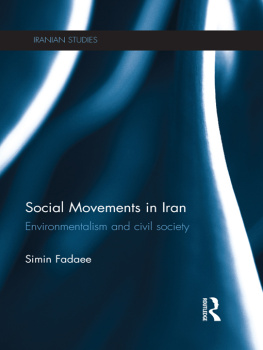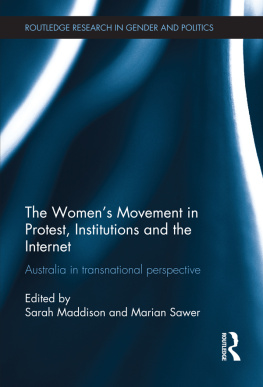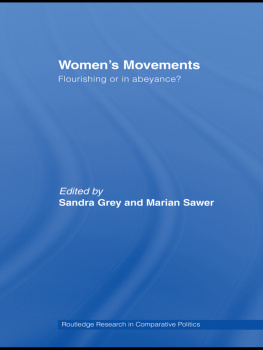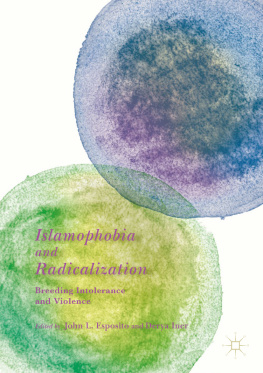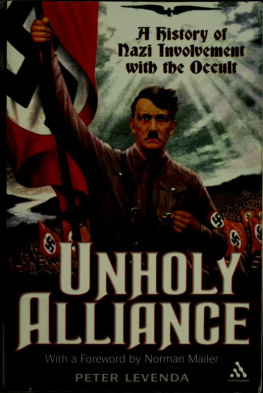Radicalization and Disengagement in Neo-Nazi Movements
This book offers an in-depth study of personal accounts of men and women who have at one time entered, participated in and ultimately exited the neo-Nazi movement, with a focus on advanced Western states.
Through detailed stories of the movements violence, hatred, and ideology, coupled with narratives of the individuals life plans and dreams when entering the movement and reintegrating into society, the work provides knowledge, hope and new directions for readers to better understand and react to a reinvigorated extreme right across Western nations. The book provides innovative research on the relationship between the life trajectories of neo-Nazis and their significant others, enabling better and more evidence-based strategies for preventing radicalization and promoting deradicalization. The extensive case studies include the voices of those who returned to the movement, or never left at all, providing a rare opportunity to compare active, former and returned right-wing extremists. The main contribution of the book is to provide an innovative approach to the oral history of young men and women who have participated in different national and local neo-Nazi movements in Western countries, namely Sweden and the United States. In order to understand the current trends within the movement and their relationship to the surrounding society, this shift calls for in-depth analyses based on socialpsychological and sociological perspectives. Stressing the importance of having a gender theory, sociocultural, historical and both a national and contextual perspective on the neo-Nazi movement, this book contributes new knowledge to this field of research.
This book will be of much interest to students of political extremism, radicalization, terrorism studies and social psychology.
Christer Mattsson is the director of the Segerstedt Institute at University of Gothenburg, Sweden. He is the coauthor, with Thomas Johansson, of Life Trajectories into and out of Contemporary Neo-Nazism: Becoming and Unbecoming the Hateful Other (2020).
Thomas Johansson is a professor of pedagogy, at the University of Gothenburg, Sweden.
Routledge Studies in Countering Violent Extremism
This book series sets out to become the first interdisciplinary platform for the study of issues pertaining to countering violent extremism, such as deradicalization and disengagement programs and individuals as well as collective processes of leaving terrorism and violent extremism behind. Additional focus points will be the impact of programs, different cultural notions of CVE, results of large-scale CVE-related research projects, specific guidance for practitioners and policymakers in building and maintaining CVE programs, mechanisms to evaluate initiatives, as well as innovative techniques to design new ones. The series aims to help establish a new field of deradicalization studies and to build a bridge across the disconnect between experts from different fields, countries and specialities.
Counter-Terrorism Community Engagement
Pitfalls and Opportunities
Jason Hartley
Selling De-Radicalisation
Managing the Media Framing of Countering Violent Extremism
Gordon Clubb, Daniel Koehler, Jonatan Schewe, and Ryan OConnor
Understanding Islamist Terrorism in Europe
Drugs, Jihad, and the Pursuit of Martyrdom
Lewis Herrington
Radicalization and Disengagement in Neo-Nazi Movements
Social Psychology Perspectives
Christer Mattsson and Thomas Johansson
For more information about this series, please visit: www.routledge.com/Routledge-Studies-in-Countering-Violent-Extremism/book-series/CVE
First published 2022
by Routledge
2 Park Square, Milton Park, Abingdon, Oxon OX14 4RN
and by Routledge
605 Third Avenue, New York, NY 10158
Routledge is an imprint of the Taylor & Francis Group, an informa business
2022 Christer Mattsson and Thomas Johansson
The right of Christer Mattsson and Thomas Johansson to be identified as authors of this work has been asserted by them in accordance with sections 77 and 78 of the Copyright, Designs and Patents Act 1988.
All rights reserved. No part of this book may be reprinted or reproduced or utilised in any form or by any electronic, mechanical, or other means, now known or hereafter invented, including photocopying and recording, or in any information storage or retrieval system, without permission in writing from the publishers.
Trademark notice: Product or corporate names may be trademarks or registered trademarks, and are used only for identification and explanation without intent to infringe.
British Library Cataloguing-in-Publication Data
A catalogue record for this book is available from the British Library
Library of Congress Cataloging-in-Publication Data
A catalog record for this book has been requested
ISBN: 978-0-367-71452-9 (hbk)
ISBN: 978-0-367-71457-4 (pbk)
ISBN: 978-1-003-15210-1 (ebk)
DOI: 10.4324/9781003152101
Typeset in Times New Roman
by Apex CoVantage, LLC
This book is a result of a long-term study that was granted by Forte (201800081). Moreover, it is a result of more than 25 years of experience in preventing young people from entering the neo-Nazi movement. The long work of schooling a youngster who wasor was to bepart of the neo-Nazi movement has provided unprecedented access to informants in this movement. The book traces the development of the movement during the past 25 years. During the 1990s, the movement was known to the public through the rowdy and violent skinheads. Today the movement has a different appearance, and there have been significant shifts in how and when people are recruited.
The skinhead period was populated largely by teenagers and young men, while today the new recruits are close to 30 and are often well established in society. This book was driven by our curiosity to understand how this transformation took place, and how it relates to other transformations in society at large. It must also be said that this curiosity has become increasingly uncomfortable because what was screamed out and manifested by the skinheads during their violent rallies in the 1990s is now spoken in the parliaments of many democratic countries today. We do not have the ambition to provide an overall explanation of the growing influence gained by the far right (or, if one prefers, right-wing extremist discourse). We do, however, firmly believe that some of the answers to this development can be found by studying the transformation of the neo-Nazi movement.
We shared our efforts during the research process. However, Christer Mattsson had the main responsibility for the interviews and conducted most of them. His access and knowledge of the Swedish neo-Nazi movement have been crucial for this book project.
We would like to start by thanking the series editor, Daniel Koehler, who is not just the editor for this book but also for a number of articles that we have published earlier in his



